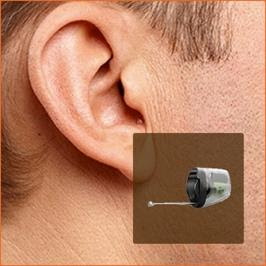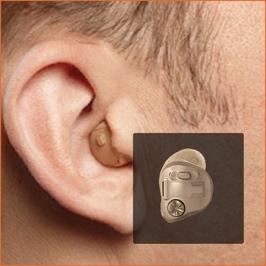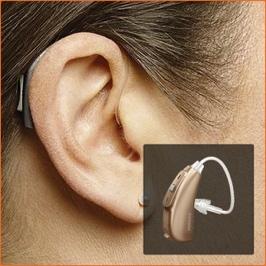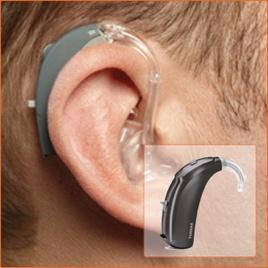Tweed Heads +61 7 5513-0338
Mt Ommaney +61 7 3310-4581
Runaway Bay +61 7 5529-3530
Hyperdome +61 7 5439-0809
Victoria Point +61 7 3207-6247
Mon-Fri, 9AM – 5:30PM
Hearing Aids
Modern hearing aids include incredibly advanced and sophisticated technology to help people with hearing difficulties to freely interact with people, enjoy music the way the composer intended, and connect with nature.
There are many types of hearing aids, with many feature options that your hearing professional at Australian Audiology Audiologist will happily work through with you to find the best solution for you.

How do they work?
The most basic function of a hearing aid is to amplify sound. The introduction of digital technology to hearing aids in the late 1990s has enabled hearing aids to do this in increasingly sophisticated ways.
Individuals have unique patterns of hearing loss. As sound enters the hearing aid, it is broken into multiple frequency bands – up to 64 different frequency bands in the most sophisticated solutions!
Each band is then amplified by the amount necessary to return an individual’s hearing to normal levels at that band.

Models & Sizes

IIC
(Invisible-in-Canal)
Smallest custom-fitted hearing aid that, due to its small size, can sit further inside the ear canal. Size prevents the availability of features such as directional microphones, and direct Bluetooth® connectivity.
Mild to moderate hearing loss.

CIC
(Completely-in-Canal)
Fits inside the ear canal, making it practically invisible.
Size prevents the use of directional microphones, unless both devices are connected via Bluetooth®.
Mild to moderate hearing loss.

ITC
(In-the-Canal)
Small case that sits inside the ear canal and outer ear.
Slightly larger case allows for more features, including directional microphones.
Allows for manual changing of programs with a switch.
Mild to moderately-severe hearing loss.

ITE
(In-the-Ear)
Largest custom-fitted model.
The most full-featured and powered in-the-ear model, including directional microphones and volume control.
Mild to moderately-severe hearing loss.

BTE
(Behind-the-Ear/BTE)
Small external case that sits behind the ear, making it practically invisible. The ear canal is open for a more natural sound quality. Good for users susceptible to more earwax, as design keep electronics away from the ear canal.
Many colour options.
Mild to moderate hearing loss.

RIC
(Receiver-in-the-Canal)
Smallest external hearing aid, as the receiver is located at the end of the tube inside the ear. Also leaves the ear canal open for a natural sound quality.
Many colour options.
Mild to severe hearing loss.

Power
(Power BTE)
More powerful solutions that provide the greatest levels of amplification. Fully-featured hearing aids, including option of a volume control.
Larger case worn behind the ear.
Many colour options.
Profound hearing loss.
Features of modern hearing aids
Noise Reduction
People with hearing loss can struggle following conversations in the presence of background noise – such as traffic, air conditioners, or ambient noise from a crowded room.
Modern digital hearing aids can tell the difference between speech and background noise. The hearing aid amplifies speech sounds and reduces amplification of background noise at each frequency band. This improves listening comfort for hearing aid users along with their ability to better understand speech in noisy environments.


Directional hearing
Traditional approach
Following conversations in noisy environments can be a tremendous struggle for people with hearing loss. Typically, most conversations are with people who are facing each other, while distracting background noise will come from the sides and behind us.
Modern digital hearing aids pinpoint the location of sounds and apply greater emphasis to sounds, like speech, coming from the front. Directional microphones are very beneficial in noisy situations, such as restaurants.
A new approach
The latest and most technologically advanced hearing aids recognise sounds that wearers want to always hear certain sounds clearly, such as music, someone speaking, and birds singing. Emphasis is given to these sounds, regardless of the direction that they are coming from.
Hearing aids with this capability will constantly scan the environment in 360 degrees and pick up and amplify desired sounds instantly.
Feedback Cancellation
Historically, the whistling sound (feedback) that many hearing aid users encountered was both uncomfortable and embarrassing. This was caused when the hearing aid’s microphone picked up amplified sound.

As you may know, sound travels in waves. The digital hearing aid can now detect the frequency of the wave shape that is causing the feedback and counteract it within fractions of a second. So, there will be no annoying and embarrassing whistling from your hearing aid.
Manual and Automatic Programs
Advanced hearing aids allow the user to change the settings by pressing a small button on the device or via a remote control, or smartphone application.
Automatic Programming
Ease of use is a very important feature of the world’s leading hearing solutions. The most advanced hearing aids constantly listen to the environment and adjust the hearing aid’s settings smoothly and automatically, without the wearer needing to touch or think about their hearing aids.

Connectivity to phones and entertainment devices
Wearers are increasingly looking for solutions to improve their ability to use their hearing aids more effectively in partnership with their smartphones, digital radio, televisions and personal devices (e.g. iPods, tablets).
In response, manufacturers used Bluetooth technology to stream sound from the external devices directly into the hearing aids in stereo
Rechargeable hearing aids
Another significant development in hearing aid technology has been the move towards rechargeable solutions, which remove the hassle of inserting and disposing of batteries.

Request a free technology discussion today!
Australian Audiology Services can help you find the hearing aid that has all the features you need for your unique needs and lifestyle. Call us today on 1300 864 327, or complete the form below and one of our Hearing Care Professionals will be in touch to answer all your questions.
Recent Blog Entries
Dawn Digweed accepted that her hearing was in decline, but it took a friendly push from a caring neighbour to set her on the path to better hearing.
We go ALL-IN for pensioners and veterans, offering advanced hearing solutions—including Bluetooth connectivity, improved noise management, and discreet designs—at no extra cost.
Signia Silk 1x offer an instant, comfortable fit, adapting to your ear without the need for custom-built moulds. These virtually invisible devices are now free of charge to pensioners and veterans through the Hearing Services Program.



